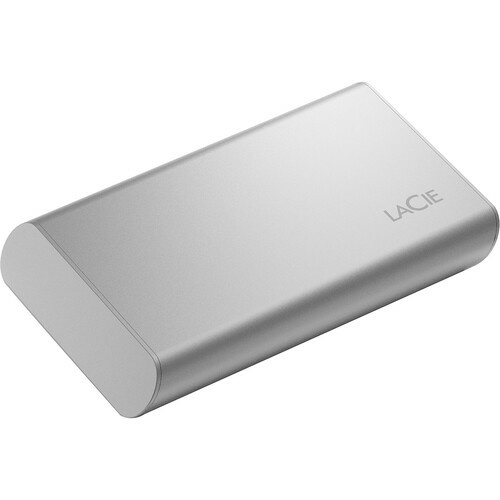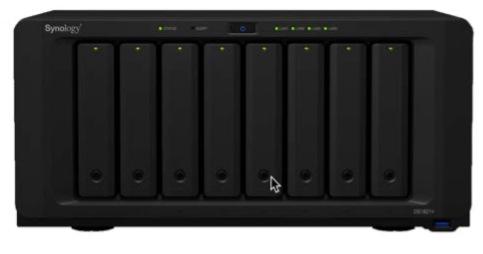[ad_1]
We look at what makes a successful backup system, the components, the ideal outcome, and how we test that all is working before the inevitable happens.
As a creative, one of the worst and most frustrating ways our journey will be hindered will be losing files, whether it’s due to a faulty memory card when capturing on the day of shooting or during the ingestion of images post shoot and prior to post-production.
So, what makes a reliable backup?
I recommend starting with three copies of your data stored on two different source mediums with at least one additional stored off-site. Three backups? Why the need for three backups? Surely, this is not only time-consuming, but expensive? Read on, and I’ll explain.
Would it surprise you to know that most commercial disaster recovery (DR) plans include three levels of backup security? On-site, offsite and cloud. Let’s look at the steps we need to take to ensure your data is secure and backed up regularly.

The above diagram is an example of a standard business backup solution. It looks complicated. Let’s break it down into seven easy, straightforward steps.
Starting with the photo capture, ideally, I’d recommend using a camera with two card slots, giving a level of redundancy. Use good quality, high-capacity cards with fast read and write speeds and ideally, shoot using raw to both cards simultaneously or raw and JPEG if you deliver JPEG only. Having images copying to both cards reduces your chances of losing files to card failure, and shooting raw as well as JPEG allows for greater post-production manipulation should you accidentally over- or underexpose your image. Brands like Lexar or SanDisk are brilliant and have an extremely low failure rate.

Step 2: On-set Backup
A rugged drive such as the SanDisk Extreme Portable SSD attached to a computer or iPad is ideal if it’s being used outdoors or if you’re accident-prone! These types of drives can be used for backing up while you’re out on a job. Weddings are a great example where you might want to back up part way through a day. The SSD drive inside makes it an incredibly fast, light, and versatile backup option.

Step 3: Import to Working Drive
What is a working drive? Well, before backing your completed images up on your cloud storage, NAS, or onsite storage drive, you’ll probably want to perform some level of editing on your photographs. Importing your images from your camera cards on to a fast working drive attached to your computer solves two issues. Firstly, it doesn’t clog up your computer’s internal hard drive with lots of photos and slow down the operating system.
 Secondly, having a fast SSD hard drive for editing means that programs like Adobe Lightroom can render the previews more efficiently, helping you complete work more quickly.
Secondly, having a fast SSD hard drive for editing means that programs like Adobe Lightroom can render the previews more efficiently, helping you complete work more quickly.

To use your working drive, import your files using your computer from your camera cards or on-site backup by either dragging your files in finder or file explorer from your memory card to a new folder you’ve created on your attached working drive or import them and use the copy option at the top of Adobe Lightroom. This alternative uses the application to transfer the files rather than doing it manually. I prefer doing it this way as it does save you a step of having to import first and then add into Adobe Lightroom.
Step 4: Edit Your Content
Complete your editing in your chosen application.
Step 5: Send to Your Client via Your Website or Online Gallery
If you’re delivering images to paying clients or selling them via your online gallery or website, then you should include this as part of your workflow. I currently use Zenfolio, as it allows me to build my website and includes an online store, which works for me. Alternatives include Shootproof or Pic-Time. These allow me not only to sell my images but allows storage of JPEGs and raw files for a small additional charge. Exporting from Adobe’s Lightroom to Zenfolio means clients get to see the images on a website, but they are also securely stored online in a separate location away from my home or working space. This could be considered an additional offsite backup.
Step 6: Onsite Backup (Synology NAS or Other Similar RAID Redundancy System)
Literally, wherever you store your photos on a permanent device in your working location, this is your onsite backup. You can use a Network Attached Storage (NAS) drive that plugs into your broadband router or an external drive attached to your computer. NAS enclosures will be set up with a RAID (redundant array of independent disks) configuration, which essentially uses two or more disks in a single box to create a more resilient backup. With different types of RAID available, you’ll need to choose the appropriate one suitable for you and your way of working. Copy the completed images across to your onsite storage drive. Do this either within Adobe Lightroom (which preserves the storage location in your catalog file, avoiding the broken links) or by moving the files and then using the synchronize feature in Adobe Lightroom to show all your images in the new location. I recommend the Synology DS1821+ because of its simplicity in use and the key features such as expandability and reliability. Plus, it has great mobile applications that allow you to see and share your files or any movies stored on the device while out and about. You can also get this to transfer using hyper backup to another Synology NAS across the internet or another large external drive plugged into the front USB port that you take away from the main location. This then becomes your offsite backup.

Step 7: Cloud Backup (Backblaze B2)
Carbonite, Crash plan and Backblaze are all examples of a cloud-based backup service. Accessible from pretty much any internet-capable device, they require one large backup and additional incremental smaller backups as you work, meaning you can access the latest version of a file or a previously edited version. I recommend Backblaze B2 cloud storage because the costs are reasonable, set, and transparent. It also integrates with Synology perfectly, making online cloud backup a seamless and hands-off experience. It has a great mobile app too, allowing you to see all your files online.

Remember, with all of these options, make sure to check your backups are occurring regularly and also do test restores. Having the magic triangle of offsite, onsite, and cloud is great, but by only choosing one or two out of the three, you’ve still got a single point of failure.
Cloud is only going to deliver as fast as your internet will download. Onsite is great until someone breaks into your studio and things get taken. Offsite might not be available straight away; you might have to drive somewhere to retrieve it. All of these solutions are going to be somewhat useful to you. Some might not be suitable, but this article should have given you an idea of what is needed to create a robust camera-to-client backup system.
Header photo by thiago japyassu, courtesy of Pexels under Creative Commons license.
[ad_2]
Original Source Link